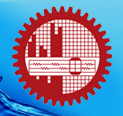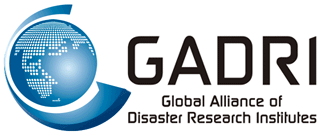- Home
- About
- Events
- Members
- About Members
- Member Institutes
- Algeria
- Argentina
- Australia
- Austria
- Bangladesh
- Brazil
- Bulgaria
- Canada
- China, People's Republic of
- Colombia
- Ecuador
- Egypt
- European Commission
- France
- Germany
- Ghana
- Hong Kong (People's Republic of China)
- India
- Indonesia
- Iran (Islamic Republic of)
- Israel
- Italy
- Japan
- Korea, Republic of
- Lao PDR
- Malaysia
- Mexico
- Morocco
- Nepal
- New Zealand
- Oman
- Phillippines
- Slovakia
- South Africa
- Sri Lanka
- Sudan
- Sweden
- Switzerland
- Chinese Taipei
- Thailand
- Turkey
- United Kingdom
- United States
- Vietnam
- Zimbabwe
- Membership
- Activities
- Resources
- GADRI Archives
 |
Institute of Water and Flood Management (IWFM)
|
| Outline Bangladesh is predominantly a floodplain country where water is key to socio-economic development and sustainability of the eco-system. Flood, drought, cyclone, river erosion, siltation, and water scarcity in dry season have made water management a challenging task. The gradual degradation of the environment due to human interventions is adding further complexities to water management. To address these issues, the Institute of Flood Control and Drainage Research was established in 1974 and later renamed as the Institute of Water and Flood Management (IWFM) in 2002. The Institute pursues research and capacity development in the field of water and flood. management that is vital for economic development and social prosperity of the country. The Institute also provides advisory and consultancy services to government and non-government organizations. Please see here for more about the institute.
[detail] --> |
|
 |
Department of Disaster Science and Management (DSM)
|
| Outline According to the Centre for Research on the Epidemiology of Disasters (CRED), 336 natural disasters and 234 technological disasters were reported worldwide in 2011 only. One trillion dollars have been lost in the last decade due to disasters and one million people killed. Disasters directly affect business performance and undermine longer-term competitiveness and sustainability........ The geographical location, land characteristics, multiplicity of rivers and the monsoon climate render Bangladesh highly vulnerable to natural hazards. The coastal morphology of Bangladesh influences the impact of natural hazards on the area. Particularly in the southwestern area, natural hazards increase the vulnerability of the coastal dwellers and slow down the social and economic development. Moreover, climate change and human induced hazards add a new dimension to community risk and vulnerability. Humanitarian implementation plan (2012) shows that Bangladesh loss about 6188 lives and have to suffer 550 $ million economic loss due to only natural disasters. Global Assessment Report (2011) published by UNISDR reveals that Bangladesh is in 1st and 6th position in terms of vulnerability of flood and cyclone respectively. Recently GERMANWATCH shows that Bangladesh is in 2nd position in Climate Change Vulnerability Index. So it has no denying that our motherland is in a great risk of disasters. As of late, the world is giving more emphasize on disaster risk reduction through strengthening preparedness and mitigation measures over response and recovery activities. This is known as paradigm shift. There exists a saying if we spend 1$ for disaster risk reduction we can save 10 $ equivalent cost in during and post disaster situation. So Bangladesh is also giving more concentration to make the nation resilient through disaster risk reduction, climate change adaptation and sustainable development.
Bangladesh is world renowned for disaster management. Its main reason is the development of capacities among people through living with disasters over years and already developed indigenous knowledge. But if we can integrate science based knowledge with existing endowed knowledge the comprehensive disaster management system will be more effective and fruitful. To fulfill this goal, Dhaka University, the highest echelon of academic excellence in Bangladesh, established a new department named Disaster Science and Management (DSM) under the Faculty of Earth and Environmental Sciences in 2012. The main objective of this department is to represent it worldwide as a research hub in the field of both hazard science and disaster management.
Newly established DSM maintains a vibrant academic environment encompassing a rich library with good collections and two laboratories. All the computers are installed by licensed ArcGIS and Erdas Imagine software in Geo-Information Lab. This lab has the facilities of interpretation of aerial photos and some multihazard risk assessment software as well. The Geophysical and Geo-technical Hazard Risk Assessment Labs are equipped with most efficient equipment like PS logging, 48-channel Seismometer, Microtremor Instruments, Consolidation (Oedometer), Direct Shear Test instrument, Total Station etc. While all teachers and students can use the broadband and Wi Fi Internet facilities, the department uses Multimedia Projector in the classrooms and in laboratorie [detail] --> |
|


